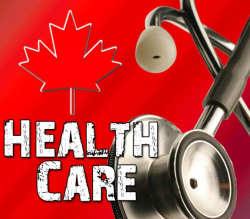 Only old reporters and historians now remember the Sagebrush Rebellion, which may have been more decisive in setting our current political course than any other event of the late 1970s.
Only old reporters and historians now remember the Sagebrush Rebellion, which may have been more decisive in setting our current political course than any other event of the late 1970s.
The Sagebrush Rebellion was a rural revolt on behalf of private property, against the government that still controls most of the land. Before it got going the West was represented by people like Frank Church in Idaho, a liberal firebrand whose name lives today in a 1973 amendment against the Vietnam War. Mike Mansfield, a Montana Democrat, was the Senate Majority Leader in the 1970s, and even Alaska was represented by Democrat Mike Gravel.
Today, the only Democrats in the Intermountain West and High Plains are “yeah-but” Democrats, people like Heidi Heitkamp of North Dakota, who generally agrees with the principles of the rebellion but argues that, sometimes, like in her election, the Republican is just a little too radical for local tastes.
The modern equivalent of the Sagebrush Rebellion is health care. Democrats use the shorthand Medicare for All.

Love it or hate it, America has the most inefficient health care system in the world. We spend 18% of our gross domestic product on health care, but only manage to serve a portion of our people, and not all that well. In contrast Canada, which has a public health care system, manages to cover everyone on 12% of GDP. American life expectancies are close to those of Cuba, and with the opioid crisis could be heading down.

What made the difference? There was less paperwork. The appropriate resources were available, in the right quantity, and no more. The drugs were not overpriced. The doctors were not overpaid. The hospital was a small building, without an opulent entrance. Everyone was focused on the mission, and money was secondary.
Medicare has something in common with this, but the American system Canada has the most in common with is that of the Veterans Administration. The VA is a true single-payer system. It is completely mission oriented. It gets the best prices on drugs and equipment. Its facilities are not fancy. Yet Veterans get more care, for less money, than any other group in our society.
In fact, the older, sicker and poorer you are in America, the further health care dollars go. VA care is cheapest, followed by Medicare and Medicaid. The private insurance system costs most of all.

Insurers know this, and since the advent of Obamacare have been slowly moving toward a more vertically integrated model. That’s why CVS is buying Aetna. That’s how Centene makes money serving Medicare and Medicaid patients. It means less choice for patients, but you can make sure clinics use best practices, doctors prescribe the most cost-efficient drugs, and salaries are kept in line. Yes, doctors are going on salary.
What Democrats are going to do over the next two months is not “scream that Republicans are about to take away your health care,” as one idiot wrote recently, but demonstrate, through anecdote and statistics, how this has already happened. Trump’s “low cost” insurance is non-insurance, and people who are dying today can describe just how that feels. Trump’s raising of Obamacare prices, his destruction of the individual market, can be demonstrated, by people at kitchen tables looking at their bills. The Congress’ decision to cut Medicare, the Republican governors’ refusal to accept Medicaid and (worse) the ongoing efforts to destroy the VA through privatization and budget cuts can all be brought, easily, into human focus, through story-telling.

Centralized purchasing, centrally-owned facilities and centralized billing systems can start the process of cost control Amazon has embarked upon. Medicare for All may be the only way to prevent an Amazon takeover of health care. America’s biggest businesses, including the Cloud Czars, are going to endorse this change. They know what data can do, and they’re anxious to do it. They’ve already agreed to adopt common standards for moving medical data around, an important first step.
Washington pundits and analysts are always behind the curve. They didn’t see the Sagebrush Rebellion coming, they didn’t see Trump coming, they don’t see this coming.
It’s not just a blue wave. It’s a policy tsunami, a complete reorganization of over one-sixth of the economy.
It’s coming.









